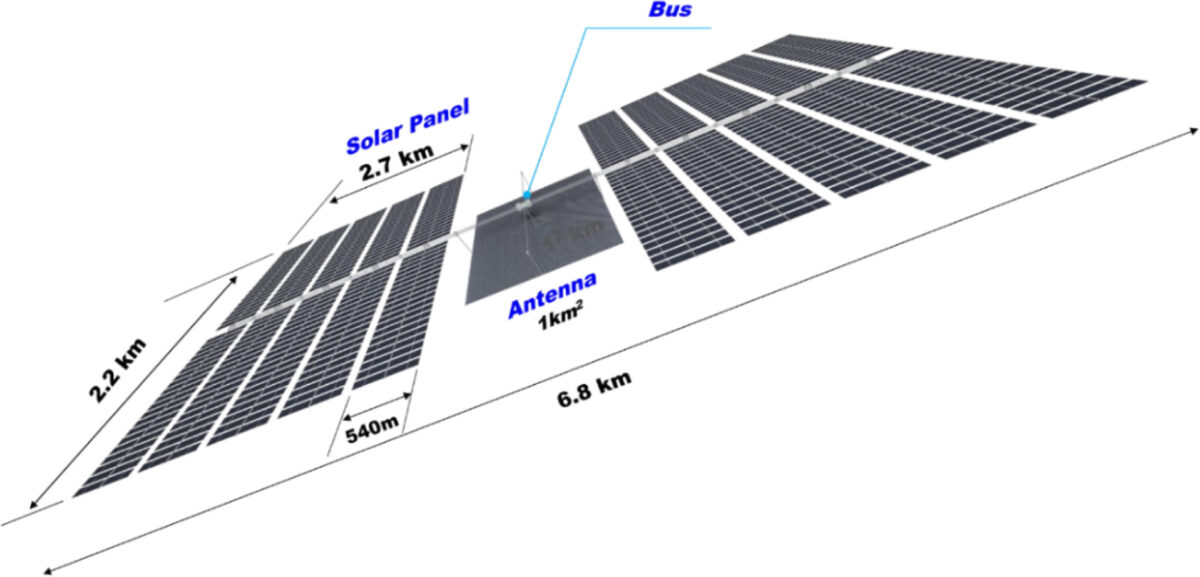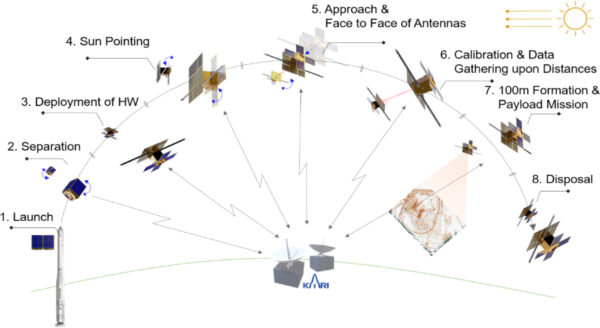
Image: Korea Aerospace Research Institute, Space Solar Power and Wireless Transmission, Creative Commons License CC BY 4.
Scientists from South Korea’s Korea Aerospace Research Institute (KARI) and the Korea Electrotechnology Research Institute presented in a new paper the advancements of their Korean Space Solar Power Satellite (K-SSPS) project. Namely, they presented a conceptual design of the satellite, its end-of-life disposal method, and a first pilot system and experiment.
“The objective of Japan is to develop gigawatt-level space solar power satellites (SSPS) by 2050, and China aims at megawatt-level SSPS by 2035 and gigawatt-level satellites by 2050,” corresponding author, Joon-Min Choi, told pv magazine. “Although Korea entered the field of SBSP relatively late, it has made notable progress. These advancements exemplify Korea’s commitment to achieving Space-Based Solar Power (SBSP) and contribute to the ongoing collective efforts in this field.”
As for the proposed design of the power-transmitting satellite, the group emphasized that it is “not derived from rigorous analyses but rather serves as system requirements for commercial viability.” Per this design, the system will have a mass of 10,000 tons and transmit microwave at a frequency of 5.8 GHz to Earth via a 1.0 km2 antenna. The microwaves can be converted on the ground to usable electricity via rectennas, which are special receiving antennas that are used for converting electromagnetic energy into direct current (DC).
The system is planned to have two solar array wings of 2.2 km × 2.7 km each. It will use 4,000 sub-solar arrays of 10 m × 270 m, made out of thin film roll-out, with a system power efficiency of 13.5%. On the ground, the researchers propose to place 60 rectennas with a diameter of 4 km along the Korean Demilitarized Zone (DMZ). In that case, 60 satellites will have to correspond to the 60 rectennas.
“If each rectenna could generate 2 GW, the total power collected would be 120 GW, providing approximately 1 TWh of electricity per year,” they said. “This amount exceeds South Korea’s electricity consumption in 2021 (0.5334 TWh) and surpasses the combined electricity consumption of South and North Korea for a certain period of time.”
Based on previous literature, with a lifetime of 30 years, such a structure could provide electricity at a price of $0.03/kWh. Per the proposal, the satellite bus will first get into the Low Earth Orbit (LEO), where the main structure and the solar arrays will be installed. After conducting some tests, harvested energy will power the K-SSPS journey from the LEO to the geostationary orbit (GEO).

Life of the proposed pilot
Image: Korea Aerospace Research Institute, Space Solar Power and Wireless Transmission, CC BY 4.0 DEED
The disposal method proposed is to intentionally collide the structure at the end of its lifetime into the lunar surface, preferably on the rear side of the Moon. This will ensure the complete removal of its debris from space while also potentially recycling valuable materials for future lunar colony residents.
“As we stand on the verge of commercialization, it becomes imperative to scrutinize and illuminate the inherent weaknesses of SBSP and devise effective solutions or mitigation strategies,” the group said. “Of paramount importance is the necessity to articulate a comprehensive disposal methodology for the mega-size structures associated with SBSP. This substantiation is crucial for justifying the development of SBSP.”
According to the researchers, a pilot system aimed at validating power transmission capabilities and verifying the functionality of deployable/expandable devices can be realized in Korea already in the 2020s. The proposed pilot consists of two small 60 × 60 × 80 cm satellites, each with a mass of 120 kg. One of those will act as an electric power transmitter, while the other satellite serves as a receiver.
“The total solar panel area of the power transmission satellite is not sufficient to continuously transfer the power generated by the Sun, despite the solar panels providing a minimum of 0.39 kW of power,” they said. “To overcome this limitation, the power transmission satellite is equipped with two additional batteries, each weighing 4 kg, allowing for the storage of as much solar energy as possible before transmitting the power to the power reception satellite.”
They also explained the input power of the transmitter will be 8.6 kW, while the output power of the transmitter will be 3.44 kW. They calculated the average output power for different distances, ranging from 100 m to 1,000 m. Per their calculation, for 100 meters, the output load is 162 watts, while for 1,000 meters, it can be as low as 0.12 watts.
In 2019, the KARI set a goal of developing a LEO Space Solar Power Test Satellite by 2040 and a GEO SSPS by 2050. Those goals were also adopted in 2022 by the “KARI Technology Strategy.” The current developments were presented in “Case studies on space solar power in Korea,” published on Space Solar Power and Wireless Transmission.